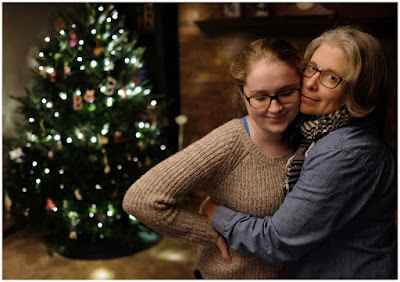Tips & Tricks

5 Photoshop Quick Tips
Photograpy Techniques How ToPhotoshop is extremely powerful. With all its power, it’s almost impossible to learn it 100% inside out. With this in mind, any small tid-bit of information to bring a user one step closer to mastering it is a good thing. It’s with this in mind I offer you five quick tips that I hope can be incorporated into your workflow.
QUICK TIP #1: Navigate Around Your Image Quickly and Efficiently - Part 1
When zoomed into an image at high magnification, scrolling from one side of the photo to the other involves many mouse clicks. To navigate anywhere you want quickly and efficiently, follow the steps below.
Zoom into a photo beyond 100%. The higher the magnification, the more efficient the technique.
When zoomed in, no matter what tool is active, when you hold the “H” key, it turns into the hand tool (it’s actually the keyboard shortcut).
Hold the “H” key and click on the photo. You’ll see a thin rectangle appear.
Drag the rectangle to the area you want to see close up. Click and drag it again to another area.
Each time you click and hold the mouse with the H key pressed, you’re brought back to the full size photo.
Click the mouse again and drag the box to a different portion of the image.
QUICK TIP #2: Navigate Around Your Image Quickly and Efficiently - Part 2
As an alternative to the above method, use the following two:
#1. Zoom into the image at high magnification.
Click and hold the Space Bar. Regardless of the tool you have active, it will turn into the Hand Tool.
Continue to hold the Space Bar and click and drag in the image. Drag left to move to the left. Drag right to move to the right.
#2. Zoom in and hold down the Space Bar and the Command/Control key.
Place the cursor over the exact spot of the photo you want to see bigger.
Drag the mouse to the right to zoom in at that exact spot
Drag the mouse to the left to zoom out to that exact spot.
The more accurately you hover and click the mouse on a specific part of the photo, the more precisely you’ll zoom into a specific portion.
Combine all the steps from Quick Tip 1 with Quick Tip 2 to create a precise and streamlined navigation workflow.
QUICK TIP #3: Customize the Background Color of Your Photoshop Workspace.
Open any picture in Photoshop and expand the workspace so the area behind the photo is your default color.
Click the eyedropper and choose a color from the photo you’d like to see become the background workspace. You’ll see it appear as the Foreground Color in the toolbox.
Shift-Click the Paint Bucket tool in the background workspace to change the color.
To revert to the original color, Control or Right click on the new background color to bring up the dialog box and choose your option. Note that you can set the background to a Custom Color if you desire.
QUICK TIP #4: Customize the Size of the Thumbnail in the Layers Panel.
When I work with layer masks, I want to to see the result of my painting on the mask in the layers panel. If the thumbnail is small, it’s tough to discern. There’s an option to change the size of the thumbnail in the layers panel.
Be sure the Layers Panel is visible. As seen in the photo, the thumbnail is small. Note the red box I placed around the small icon in the top right - click on that.
Scroll down to PANEL OPTIONS.
Click on the radial button of the large icon and hit OK.
If you do any work on a layer mask, you’ll be able to distinguish the results of your efforts.
QUICK TIP #5: Temporarily Hide Marching Ants to See the Precision Of An Adjustment.
I often need to make a selection in Photoshop to tweak a local area’s color, luminosity, saturation, etc. With the marching ants visible, it’s tough to evaluate the edges of the adjustment because the marching ants hides them. The fix is easy.
Note the marching ants around the perimeter of the zebra’s ears. If I need to make an adjustment to the background, I can’t see how the edges will be impacted because the ants get in the way.
Press the Command key on a Mac or the Control key on a PC while holding the “H” key and they will disappear. If you want to see them reappear, repeat the steps as it works as a toggle. The “H” key represents “Hide.”
Visit www.russburdenphotography.com for information about his nature photography tours.
QUICK TIP #1: Navigate Around Your Image Quickly and Efficiently - Part 1
When zoomed into an image at high magnification, scrolling from one side of the photo to the other involves many mouse clicks. To navigate anywhere you want quickly and efficiently, follow the steps below.
Zoom into a photo beyond 100%. The higher the magnification, the more efficient the technique.
When zoomed in, no matter what tool is active, when you hold the “H” key, it turns into the hand tool (it’s actually the keyboard shortcut).
Hold the “H” key and click on the photo. You’ll see a thin rectangle appear.
Drag the rectangle to the area you want to see close up. Click and drag it again to another area.
Each time you click and hold the mouse with the H key pressed, you’re brought back to the full size photo.
Click the mouse again and drag the box to a different portion of the image.
 |
 |
QUICK TIP #2: Navigate Around Your Image Quickly and Efficiently - Part 2
As an alternative to the above method, use the following two:
#1. Zoom into the image at high magnification.
Click and hold the Space Bar. Regardless of the tool you have active, it will turn into the Hand Tool.
Continue to hold the Space Bar and click and drag in the image. Drag left to move to the left. Drag right to move to the right.
#2. Zoom in and hold down the Space Bar and the Command/Control key.
Place the cursor over the exact spot of the photo you want to see bigger.
Drag the mouse to the right to zoom in at that exact spot
Drag the mouse to the left to zoom out to that exact spot.
The more accurately you hover and click the mouse on a specific part of the photo, the more precisely you’ll zoom into a specific portion.
Combine all the steps from Quick Tip 1 with Quick Tip 2 to create a precise and streamlined navigation workflow.
QUICK TIP #3: Customize the Background Color of Your Photoshop Workspace.
Open any picture in Photoshop and expand the workspace so the area behind the photo is your default color.
 |
Click the eyedropper and choose a color from the photo you’d like to see become the background workspace. You’ll see it appear as the Foreground Color in the toolbox.
Shift-Click the Paint Bucket tool in the background workspace to change the color.
 |
To revert to the original color, Control or Right click on the new background color to bring up the dialog box and choose your option. Note that you can set the background to a Custom Color if you desire.
 |
QUICK TIP #4: Customize the Size of the Thumbnail in the Layers Panel.
When I work with layer masks, I want to to see the result of my painting on the mask in the layers panel. If the thumbnail is small, it’s tough to discern. There’s an option to change the size of the thumbnail in the layers panel.
Be sure the Layers Panel is visible. As seen in the photo, the thumbnail is small. Note the red box I placed around the small icon in the top right - click on that.
 |
Scroll down to PANEL OPTIONS.
 |
Click on the radial button of the large icon and hit OK.
 |
If you do any work on a layer mask, you’ll be able to distinguish the results of your efforts.
 |
QUICK TIP #5: Temporarily Hide Marching Ants to See the Precision Of An Adjustment.
I often need to make a selection in Photoshop to tweak a local area’s color, luminosity, saturation, etc. With the marching ants visible, it’s tough to evaluate the edges of the adjustment because the marching ants hides them. The fix is easy.
Note the marching ants around the perimeter of the zebra’s ears. If I need to make an adjustment to the background, I can’t see how the edges will be impacted because the ants get in the way.
 |
Press the Command key on a Mac or the Control key on a PC while holding the “H” key and they will disappear. If you want to see them reappear, repeat the steps as it works as a toggle. The “H” key represents “Hide.”
Visit www.russburdenphotography.com for information about his nature photography tours.

















